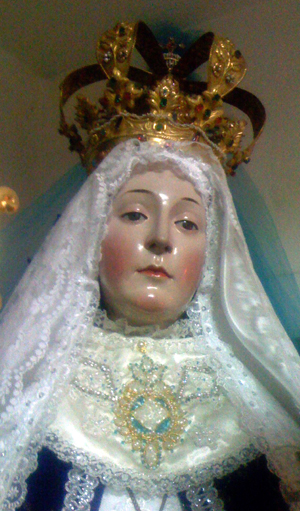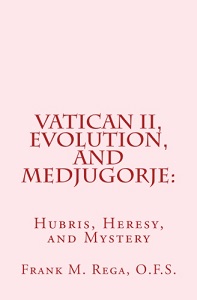How do traditionalists resolve the conflict caused by the assertion that the Church has broken from the traditional Magisterium and has been infiltrated by Modernist heresies, and their recognition that it is still same identical Roman Catholic Church?
A recent article on the Tradition in Action website by John Vennari is critical of Pope Benedict's concept of a 'hermeneutic of continuity,' as a way to interpret Vatican II in the light of Catholic Tradition. In the article, Vennari asserts that the heresy of Modernism has penetrated the Church. He contends that a synthesis between Tradition and Vatican II would be a synthesis between Tradition and Modernism. (Modernism, of course, was labeled the "synthesis of all heresies" by Pope Pius X.)
Although not mentioned by Vennari, a specific example of a Modernist heresy in the documents of Vatican II is its statement that man was created for his own sake. Scripture on the other hand clearly teaches that God created all things for Himself (see article on this).
Vennari thus concludes that with Vatican II there is not a continuity, but an actual rupture with Tradition. "Pope Benedict XVI’s approach to what is called ecumenism and religious liberty — is at odds with the traditional Magisterium of the centuries. Here we do not find continuity, but rupture." This approach would include interreligious prayer and recognition of rights for false religions.
Has the institutional Vatican II church betrayed true Roman Catholicism, by mixing Catholic truths with Modernist heresies? Has it departed from the Apostolic continuity of doctrine? According to Mr. Vennari the Conciliar church has indeed broken with the Apostolic Tradition and embraced false teaching. Although his article does not express the obvious conclusion, this break essentially would make the Conciliar church just one more form of Protestantism. Its branches have separated from the vine. Entities which have broken with Church doctrine, and embrace heresy, are in effect Protestant sects. However, throughout his article he treats the Vatican II church as if it were still the indefectible Roman Catholic Church.
Mr. Vennari perhaps inadvertently, has presented a perfect example of what the psychologists call cognitive dissonance. This occurs when someone is trying to reconcile a conflicting situation. In this case, some traditionalists, who believe that the Vatican II Church is the true Church, also put forth evidence to demonstrate that it has broken from true Catholicism.
The dissonance in this situation is great. Since they cannot bring themselves to accept the full implication of a rupture, they must try to make the Vatican II church fit the mold of Catholicism, and do their best to ignore the elephant in the room: heresy and the break with the ages old Magisterium. Therefore, they proceed as if the break were not definitive. The net result is that they are forced to accept as the true church one that they also accuse of being an impure entity, steeped in falsehoods and denying some of its earlier dogmas.
By accepting the status quo, they take the position that is the most comfortable psychologically, and which lessens the tension of the dissonance between the two alternatives. They have resolved the conflict by reducing the importance of the conflicting belief, proceding as if the rupture with Tradition were not definitive and fatal.
But does this reflect reality? They hope against hope that somehow the ongoing crisis in the Church can be resolved and Vatican II can really be reconciled with the Traditional Faith. After 50 years they are still trying. On the other hand, what if in reality the break with Tradition is definitive, and the official, institutional Vatican II church has broken off from Roman Catholicism and doctrinal continuity, by teaching most of the Catholic truths but also by accepting Modernist heresies?
Articles in this series:
Cognitive Dissonance and the Church. Some traditionalists believe the Church has deviated from true Catholicism, but still accept it as being Roman Catholic.
The Hubris of Vatican II. Glorifies man as created for his own sake, contrary to Scripture.
Dignitatis Humanae vs. "Domine, non sum dignus." Vatican II's document on religious liberty and human dignity vs. "Lord, I am not worthy."
Wrestling with the Council . . . and with John Paul II's Universal Salvation.
In the Murky Waters of Vatican II. Can the current crisis in the Church be
traced to Vatican II? Book review.


